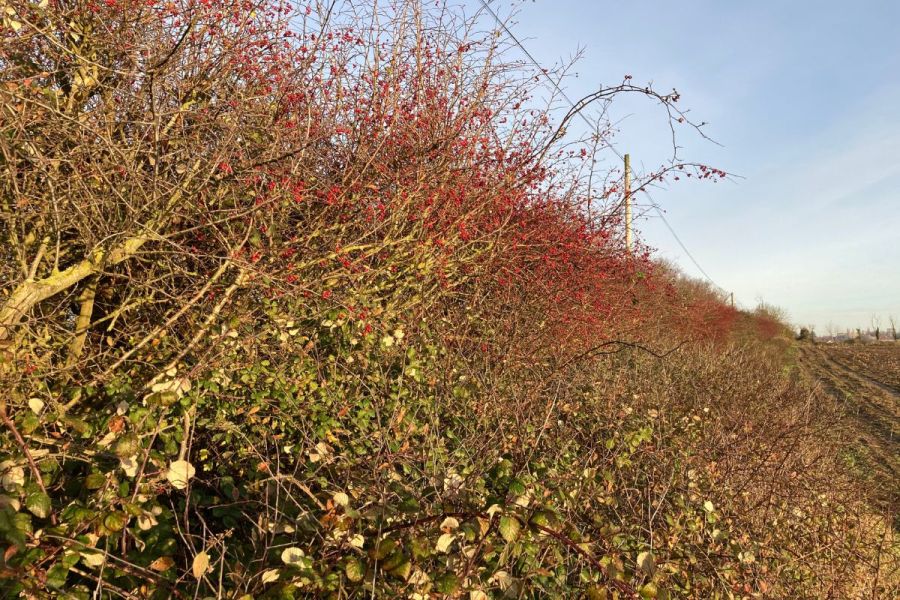By Guy Smith
I’ll confess we have somewhat unkempt hedges on this farm. I’ve never been one for an annual campaign of recreational flailing with the hedge trimmer. Aside from the ones that overhang highways, our hedges will only be cut once every three to four years.
Some farmers will view this as neglectful laziness, whereas I see it as advanced hedge management – although, if I’m honest, I’ll admit I do have a character flaw that makes me prone to thinking up reasons not to do things rather than exerting myself to get off my backside. For example, when the kids were babies, I used to convince myself it was sometimes better just to leave them crying in the cot as a way of teaching them self-reliance.
Leaving my many parental failings to one side, let’s get back to hedges and their management or, as some may call it, lack of management. There have always been valid reasons not to routinely cut hedges in the autumn and winter. One good one being that the haws on the hawthorn in its winter rouge provide a larder for birds, such as finches and thrushes, that are facing a seasonal shortage of food. To my mind these little scarlet calorific avian treats are best left in place rather than scattering them to the four winds before they had time to mature.
Aside from this feeding of the peckish flocks, there is also the highly fashionable goal of carbon capture. Hedges like trees absorb carbon so – to my simple mind – the more mass they have, both above and below ground, then the more carbon they will sequester. But there is a complication in this logic in that careful pruning can encourage new vigorous growth, which in turn will sequester more carbon. Regular cutting could encourage more growth and lay down more carbon through the spent trimmings being mixed with soil they fall on.
On the other hand, hedges that are annually whacked back to denuded three-foot stumps aren’t going to be doing much business in the carbon exchange. But somewhere in the middle ground there may be an optimum. I’m not aware of any research on this. Maybe it should be done.
And when we discuss carbon nowadays in terms of practical farm management, you can be sure it won’t be long until someone mentions carbon credits. I don’t suppose I’m the only farmer who is looking at the potential of selling carbon credits with a sense of jeopardy. On the one hand, a smart business should utilise all its assets to create profitable income streams. This seems even more keenly felt now that BPS is going the way of the dinosaurs. If by fine tuning our farm management we can monetarise it by creating carbon credits, then what’s not to like?
But on the other hand, it does feel this trick of creating carbon credits through somewhat creative carbon accounting has elements of being the latest scam soon to be bracketed with PPIs and Volkswagen’s ‘emissionsgate’ scandal. I recollect in the early days of renewable energy subsidies that it could pay to shine electric lights onto solar panels.
Furthermore, there are some ethical questions when it comes to the buying and selling of carbon credits in order to absolve or justify a polluting activity. Getting on a jet plane with a clear conscience because the airline reassures you it has stopped someone cutting down a bit of rainforest seems as dodgy as the medieval trade in religious pardons – whereby you could commit your favourite sins, safe in the knowledge that if you were rich enough to buy a pardon then you would still gain entrance into the kingdom of heaven.
At the end of the day coveting your neighbour’s wife should stay in the ‘do not do’ drawer, irrespective of what dodgy coupon you might have purchased. Similarly, if you want to contribute to a society-wide attempt to reduce the use of fossil fuels, then it’s probably best to not take too many air flights – even if someone in the Amazon rainforest has been persuaded to keep their chainsaw in its sheath.
This article was taken from the latest issue of CPM. For more articles like this, subscribe here.




